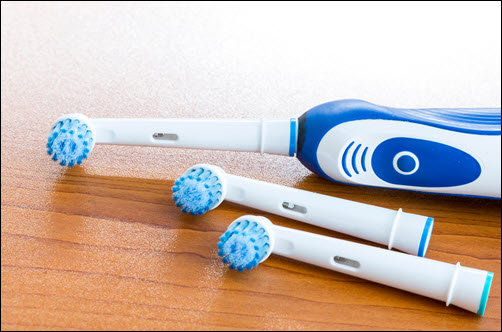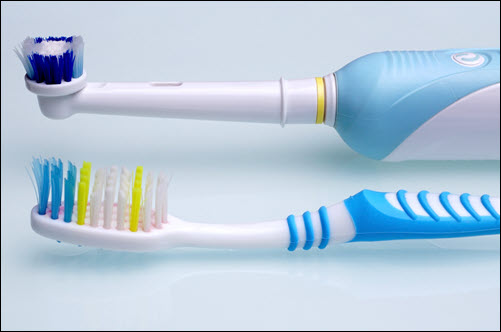Toothbrush Care: How Clean is Your Toothbrush?
When we think about a toothbrush, we typically view it as the tool used to have clean, white teeth. As such, we reach for it often and replace it as needed. Toothbrush care is important and is part of maintaining good oral hygiene.
There has been research regarding toothbrushes re-contaminating a person’s mouth. While there aren’t any conclusive results, it doesn’t mean you shouldn’t clean your toothbrush.
Toothbrush Fun Facts:
- The most popular color toothbrush is blue, and red is the second most popular.
- The earliest use of the toothbrush dates back to the ancient Egyptians, Babylonians, and Chinese.
- The original toothbrush bristles were cow or boar hairs. Today, they are made from nylon.
The facts above are fun information. But a more sobering fact is that a toothbrush is home to more than 100 million bacteria. So, the truth is that your toothbrush is not always the cleanest thing around!
Toothbrush Care for a Healthier Brush
 Wash your hands thoroughly before touching your teeth. No, you aren’t using your hands to clean your teeth. However, cleaning your hands reduces the risk of transmitting bacteria and viruses.
Wash your hands thoroughly before touching your teeth. No, you aren’t using your hands to clean your teeth. However, cleaning your hands reduces the risk of transmitting bacteria and viruses.- Run your toothbrush under hot water before and after you brush your teeth. This helps remove any food or particles hidden in the bristles.
- Place it in a holder that allows it to rest upright and dry out between brushings. Putting a lid or covering over your freshly used toothbrush will trap the moisture in the bristles. This moisture is the perfect environment for the growth of bacteria.
- Never share your toothbrush with someone else. Even after rinsing with hot water and drying, there is still the risk of spreading germs. Sharing a toothbrush with someone who has immune suppression can be especially dangerous!
- Store your toothbrush as far away from the toilet as possible. Flushing a toilet sends bacteria into the air and onto other surfaces in the bathroom.
- Avoid storing toothbrushes side by side. If possible, keep them a couple of inches from each other.
- Replace your toothbrush every 3 to 4 months. If the bristles look worn out or frayed, replace the brush sooner.
- If you opt to use a toothbrush cover, then be sure to clean it every two weeks to keep bacteria from forming.
Unnecessary for Your Toothbrush
- Soaking your toothbrush in disinfecting solutions or mouthwash. This can promote the spreading of germs and the growth of bacteria.
- Putting your toothbrush in the dishwasher, microwave, or ultraviolet devices. This will only shorten the life of your toothbrush.
- Boiling your toothbrush. This is more likely to deform the handle of your toothbrush than help the bristles!
If you have questions about toothbrush care or other elements of dental health, talk to one of our team members at Sauve Family Dentistry. The toothbrush might seem commonplace in our health routine, but it plays a vital role in our health. Take care of your toothbrush, and it can help you have a healthier, happier smile.




